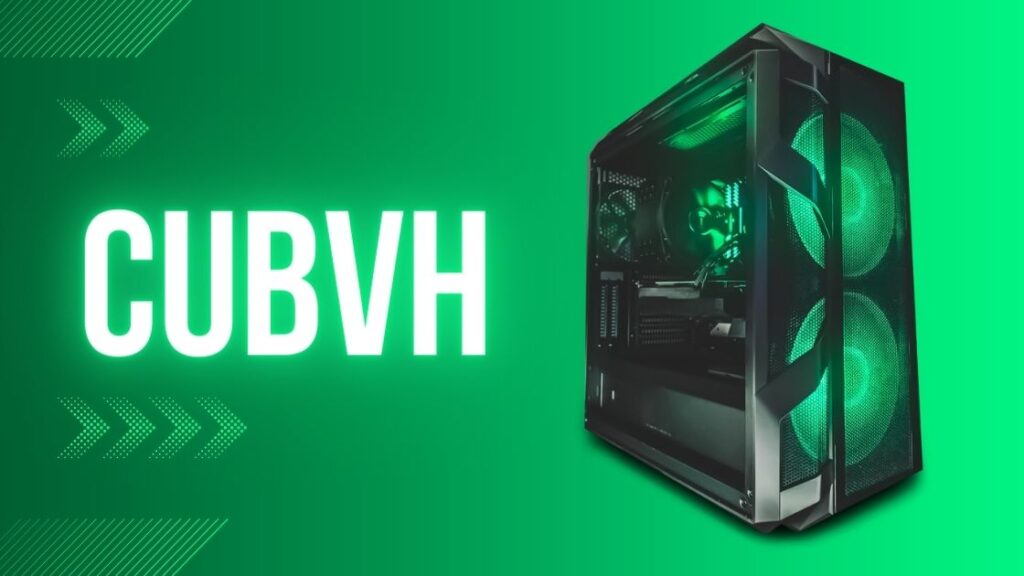Cubvh stands out in the ever-evolving world of 3D graphics and computational efficiency as an innovative tool that combines the power of CUDA with Bounding Volume Hierarchies (BVH). Optimize rendering tasks, collision detection and ray tracing while increasing rendering speeds. These capabilities make Cubvh an indispensable solution for professionals in gaming, visual effects and scientific visualization industries alike. CUBVH enables developers and researchers to push the boundaries of digital visualization and computational speed by transforming complex 3D operations into seamless, efficient processes. At Alltimeupdates, you will get the correct details about the Cubvh.
Understanding cubvh
CUBVH is a significant advancement in the field of computer graphics, especially when it comes to managing and optimizing 3D data structures. Cubvh is a program built using Compute Unified Device Architecture that handles Bounding Volume Hierarchies (BVHs). They play an essential part in 3D rendering and collision detection, using GPU power for increased computing speed. NVIDIA developed their parallel computing platform and programming model specifically tailored to exploit GPU capabilities to dramatically increase computing performance.
Bounding Volume Hierarchies (BVHs) are essential in graphics and visualization applications by efficiently organizing spatial information. Ray tracing simulates light interaction among objects within virtual environments to produce photorealistic imagery. BVHs play an essential part in speeding this process. BVH reduces the computational load associated with rendering and collision detection by grouping objects in a scene into a tree structure where each node encloses a group of objects.
Cubvh provides unparalleled advantages by integrating CUDA with BVH. Developers can leverage GPU’s massive parallelism to simplify operations involving complex 3D models and environments, including video games, virtual reality experiences and scientific research that require high-fidelity simulations and real-time rendering capabilities. Further, cubvh simplifies the development process in addition to boosting performance. With Cubvh, developers can focus more on their projects’ creative and innovative aspects since some of the complexities of GPU programming are abstracted away. Cubvh is an efficient and easy-to-use technique for optimizing 3D graphics operations that combines CUDA’s high-performance capabilities with BVH’s structural advantages.
Also read: What is an XCV Panel? Everything you need to know
Why cubvh is a Game Changer
A fundamental shift is being made in how developers and researchers approach rendering and processing tasks with Cubvh. Its unique integrated CUDA and Bounding Volume Hierarchies (BVH) make it the fastest, most efficient, and most productive 3D renderer ever.
With cubvh, rendering and collision detection processes can be dramatically sped up. Computing powered by CPUs often needs help to keep up with high-resolution rendering or real-time rendering, resulting in bottlenecks that hinder development. In 3D scenes that require detailed and dynamic rendering, Cubvh accelerates these tasks through GPU-based parallel processing. Achieving this level of acceleration is more than incremental; it is transformative, enabling previously infeasible applications.
Additionally, it democratizes rendering power. Since they are widely available, Indie and academic developers can benefit from cutting-edge performance through CUDA-enabled GPUs. Games and entertainment are among the many fields where accessibility encourages innovation and creativity.
Moreover, cubvh enhances development workflow efficiency. Optimizing its handling of BVH structures minimizes spatial data management overheads, freeing developers to focus on creative and innovative aspects of their projects. Meanwhile, its ability to streamline complex computations enhances performance and lowers development time and costs, further amplifying its impact.
Cubvh stands as an essential tool in 3D graphics and computation, providing unparalleled speed, accessibility, and efficiency for designers and innovators to push digital environments further than ever imagined before. Its impact goes far beyond simple technical improvements; cubvh gives creators and innovators freedom of creation without boundaries being set within digital environments.
Getting Started with cubvh
Start using cubvh, the CUDA-based tool designed to manage bounding volume hierarchies (BVHs) efficiently. It is an effortless journey towards enhanced 3D rendering and collision detection capabilities. This guide will walk you through the initial steps for setting up and using cubvh, from system requirements to basic operations.
System Requirements
The following requirements should be met before you dive into Cubvh:
- NVIDIA GPU: To fully utilise cubvh’s parallel computing power, an NVIDIA GPU that supports the CUDA standard is required.
- CUDA Toolkit: Visit NVIDIA’s official website and download the latest version of the CUDA Toolkit. Library and driver files are provided here.
- Programming Environment: For Linux, GCC, and Make on GCC are suitable programming environments for CUDA development.
Installation
- Download cubvh: To get started, go to the official repository and download the cubvh library. Please ensure you choose the correct CUDA Toolkit version for your system.
- Compile the Library: You may need to follow the compilation instructions depending on your operating system. To ensure the cubvh library is properly compiled with CUDA, run a makefile or use a build system such as CMake.
- Include in Your Project: You can link against the compiled binaries once the cubvh library has been collected.
Basic Operations
You will be able to start integrating cubvh’s functionality into your projects once it has been installed. Getting started is as easy as following these steps:
- BVH initialization: Create your 3D objects’ BVH structures. A boundary box must be defined for each element, and its geometry must be specified.
- Performing Ray Tracing: Ray tracing operations can be performed using cubvh’s functions. To determine intersections with your BVH-managed objects, you must set up rays and call the appropriate cubvh functions.
- Collision Detection: Similarly, cubvh can be used to quickly detect collisions between objects in your scene using GPU acceleration.
Example Code Snippet
// Example of initializing cubvh and performing an essential operation
// Note: This is a simplified example for illustration purposes.
#include “cubvh.h”
int main() {
// Initialize your 3D scene and BVH structure
// …
// Use cubvh to perform a ray tracing operation
// …
return 0;
}
Resources and Support
Check out the official cubvh documentation and community forums for more detailed instructions, examples, and support. Cubvh can add significant value to your projects as you integrate it into more complex scenarios, enabling you to fully utilize its 3D rendering and computation capabilities.
Advanced Techniques and Best Practices
Utilizing advanced techniques and adhering to best practices as you become more familiar with Cubvh can significantly enhance the efficiency and performance of your projects. To help you make an informed decision, consider the following:
Advanced Techniques
- Structure Optimization: BVH structures can be fine-tuned for better performance. Optimal rendering speed can be achieved using dynamic updating techniques for scenes with moving objects.
- Hybrid Rendering Approaches: Combine cubvh with other rendering techniques, such as rasterization, for hybrid approaches that leverage the best of both worlds depending on the scene complexity and rendering requirements.
Best Practices
- Memory Management: Efficient memory management is crucial in GPU computing. Reduce memory transfers between CPU and GPU by wisely using CUDA’s memory types (shared, constant, etc.) to optimize application performance.
- CUDA Streams: Reduce idle time and improve performance by interleaving data transfers and computations with CUDA streams. This is especially useful when working on complex scenes with many elements.
- Monitoring and Optimization: Identify application bottlenecks with tools such as NVIDIA Nsight. To optimize memory access patterns, kernel configurations may need to be tweaked, or data structures may need to be refined.
Community and Resources
New and experienced users can harness this tool’s full potential with support from the Cubvh community and a wealth of resources. Documentation, tutorials, and code examples can all be found on the official GitHub repository. In addition to reporting issues and suggesting improvements, users can contribute to the project here. You can find advice, share insights, and network with peers on forums and social media platforms dedicated to CUDA development. The developer forums and documentation on CUDA provided by NVIDIA further assist in using cubvh effectively. High-performance computing and 3D rendering can be accelerated by engaging with these resources and communities.
Conclusion
CUDA’s use in managing Bounding Volume Hierarchies makes Cubvh a pivotal tool for 3D graphics and computation. Cubvh enables developers and researchers to overcome traditional computational limitations, from improving real-time rendering to optimizing collision detection processes. Utilizing cubvh’s full potential means embracing advanced techniques, adhering to best practices, and following the guidelines for getting started. Rather than simply a tool, cubvh serves as a catalyst for future digital visualization and computational efficiency advancements.

